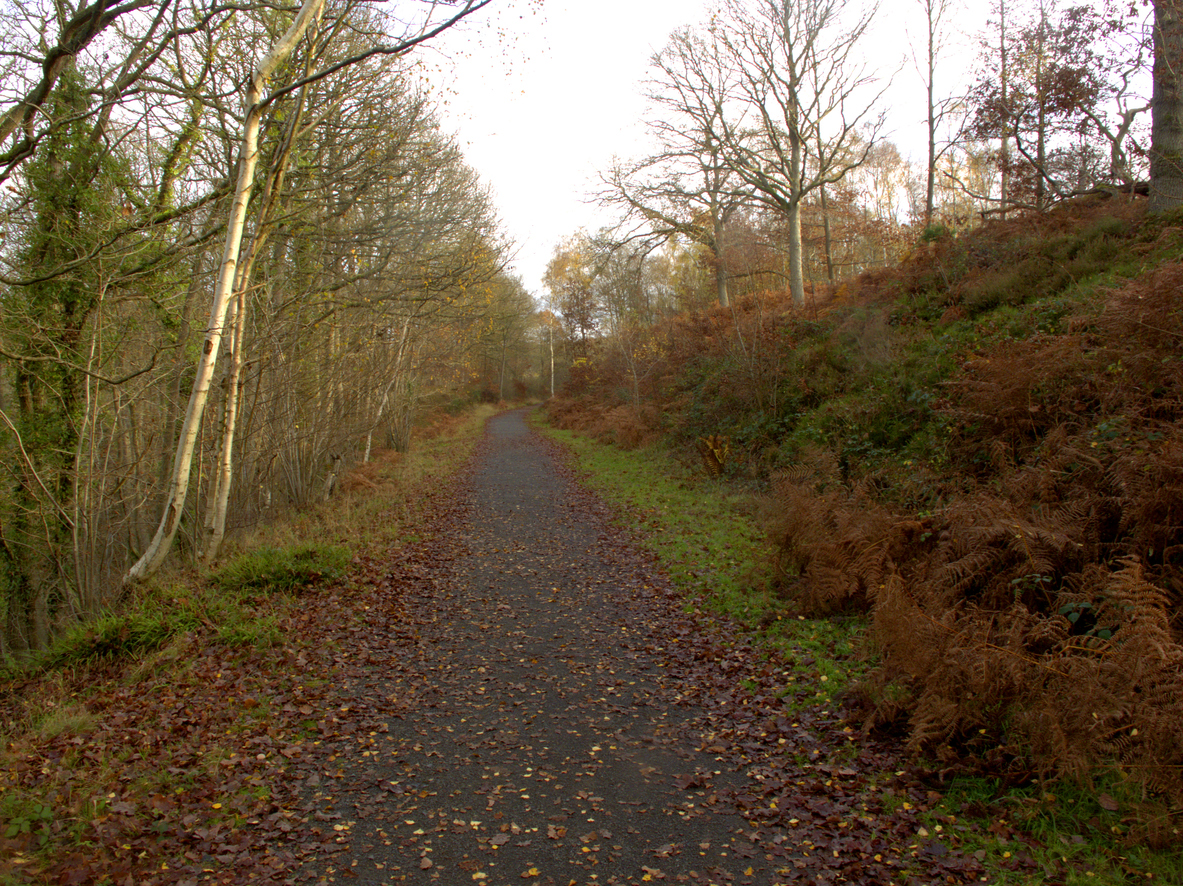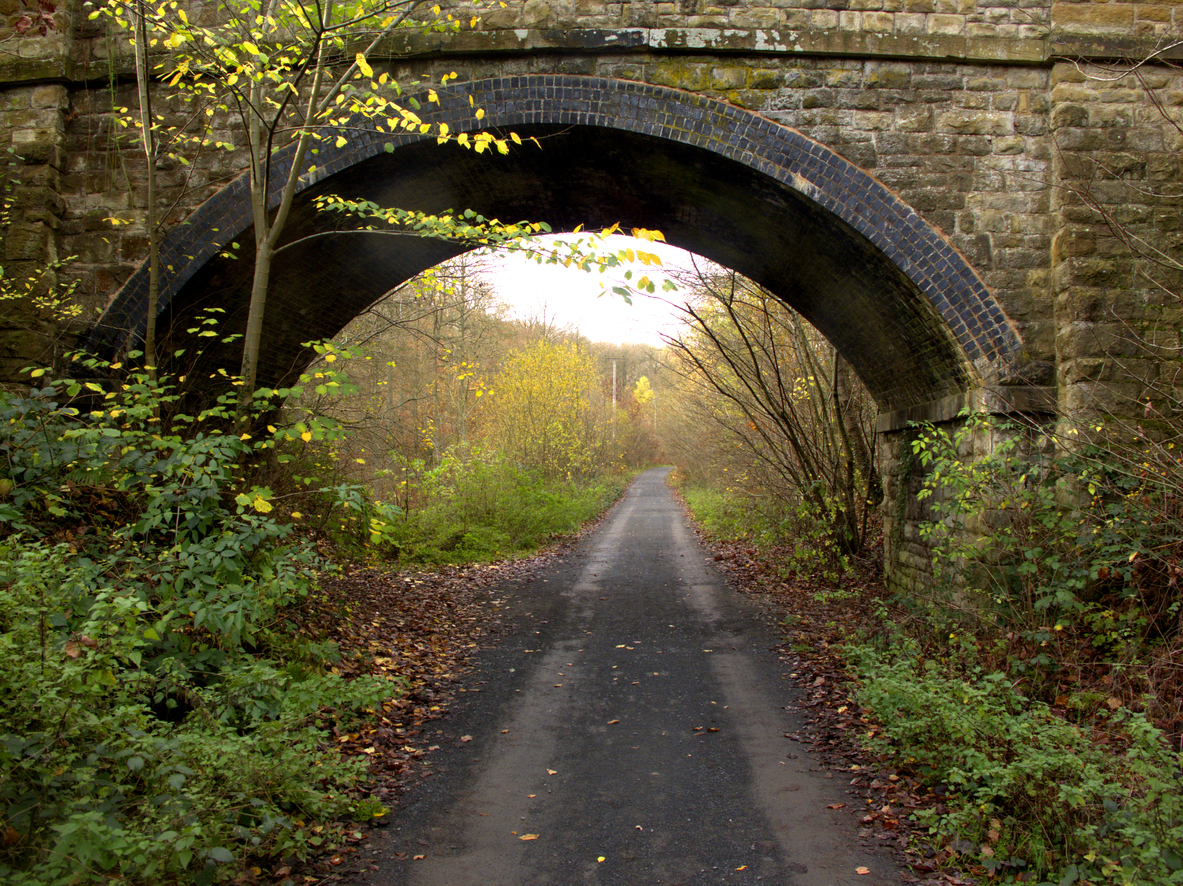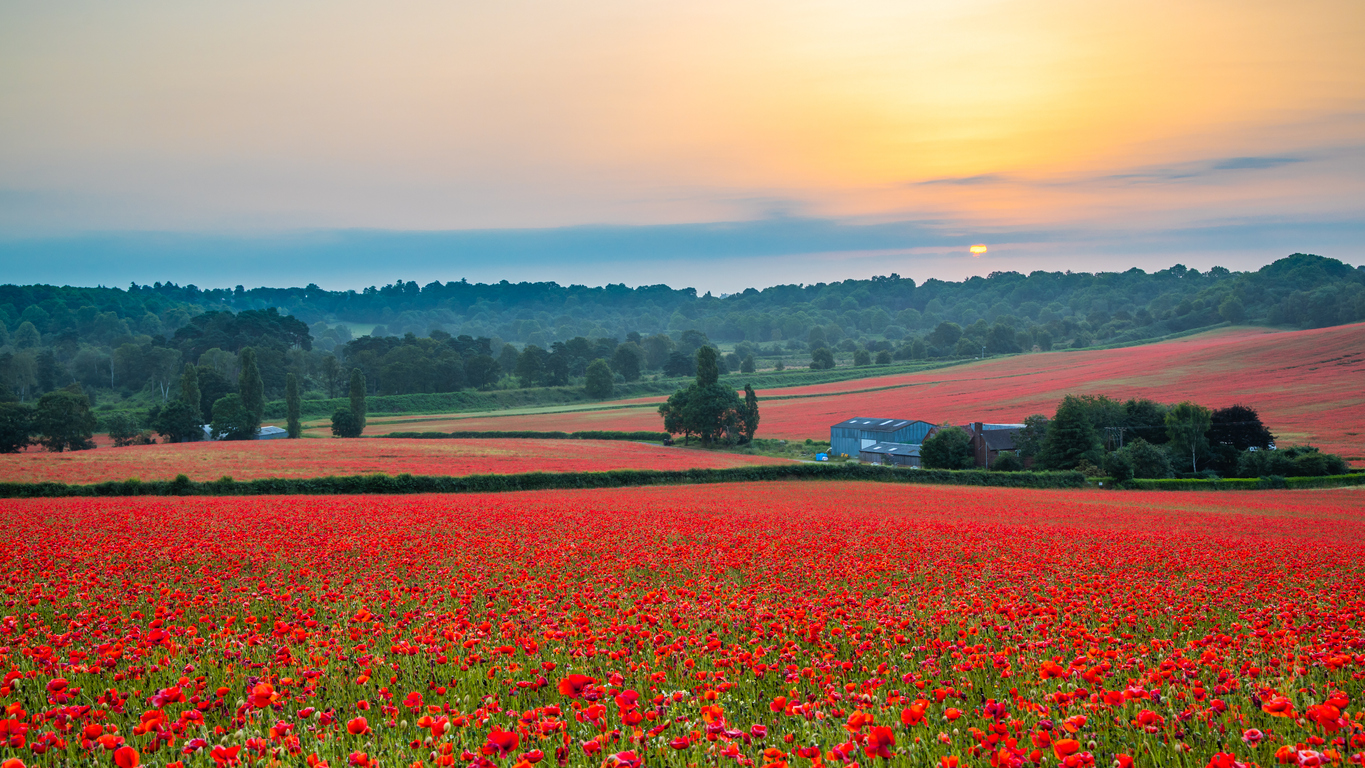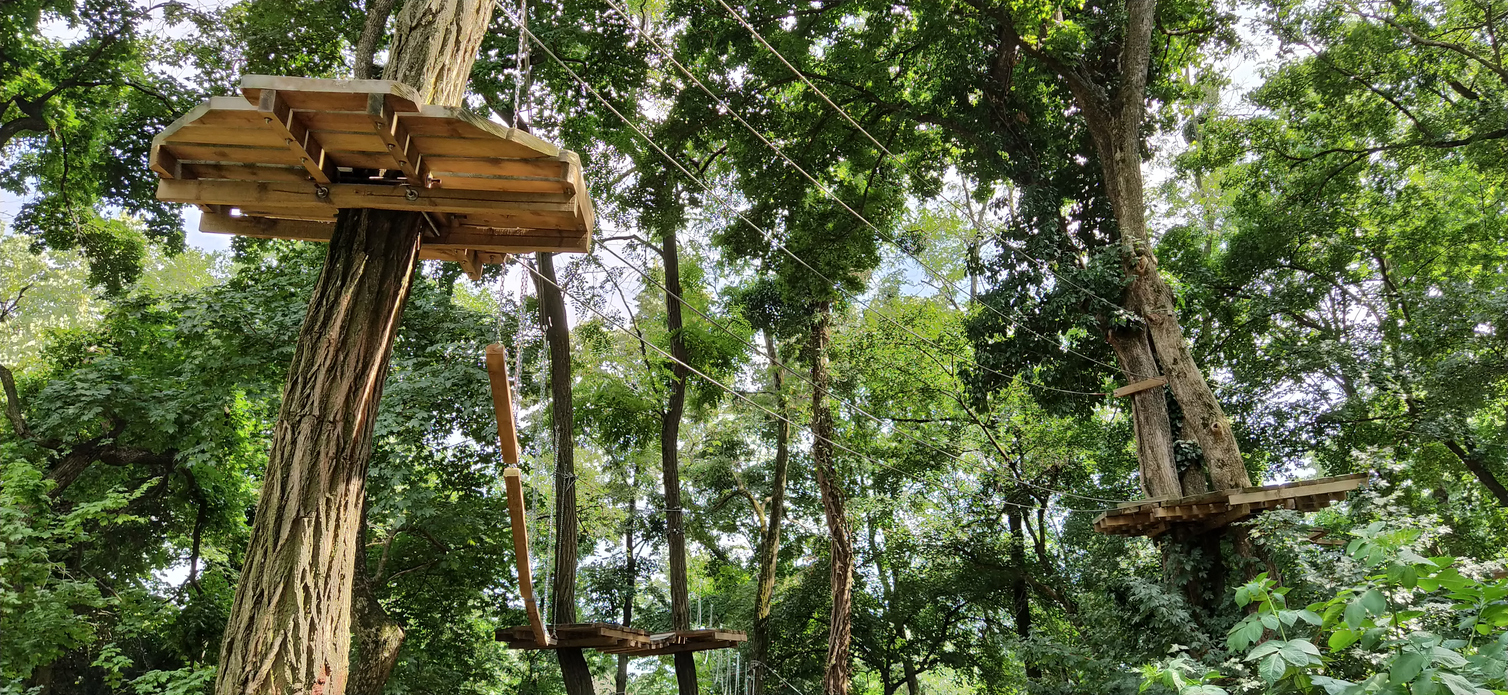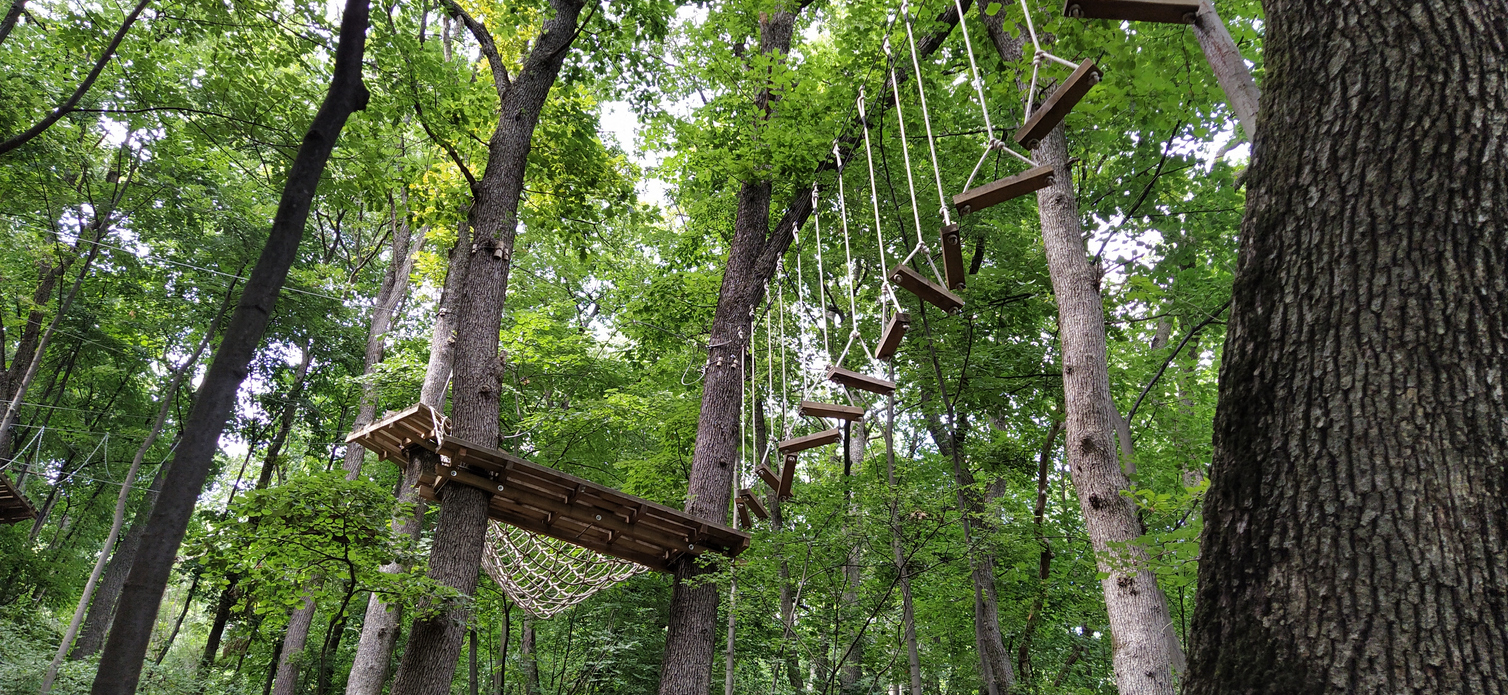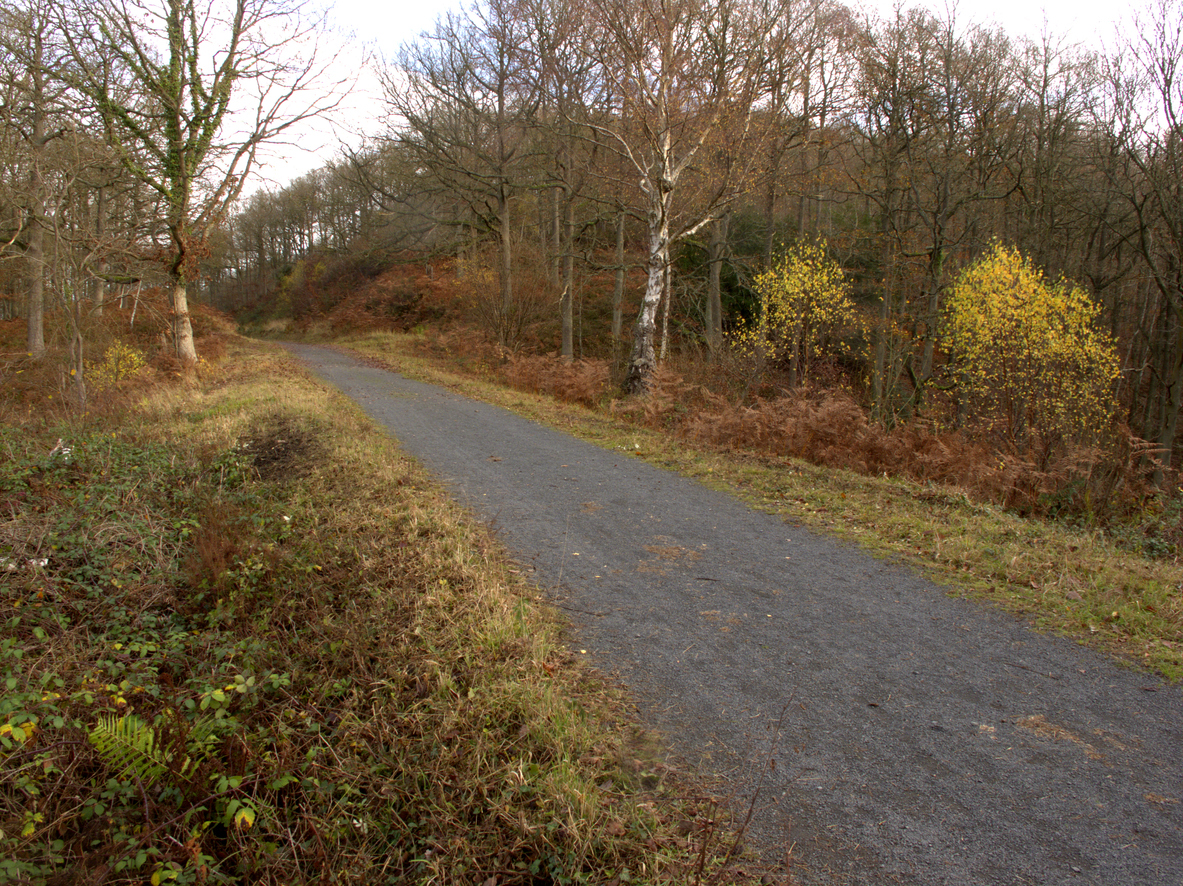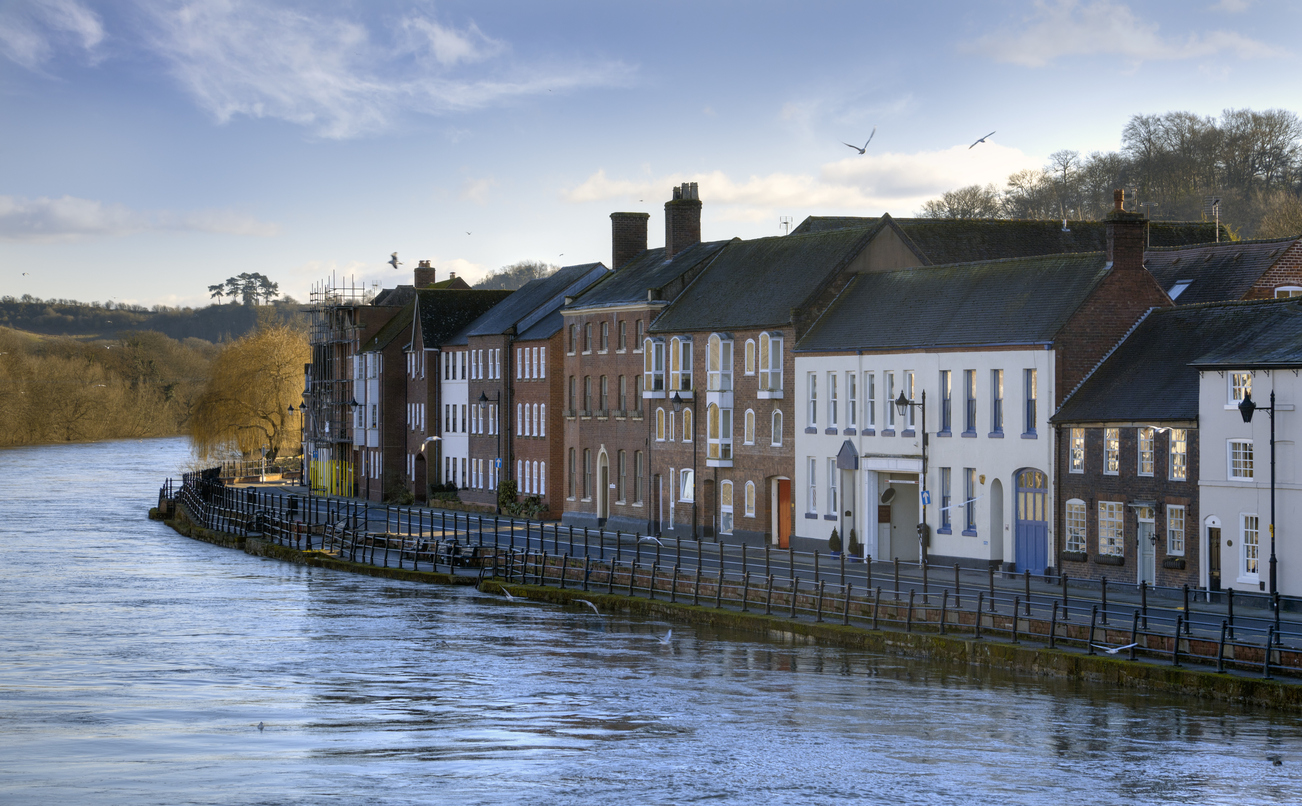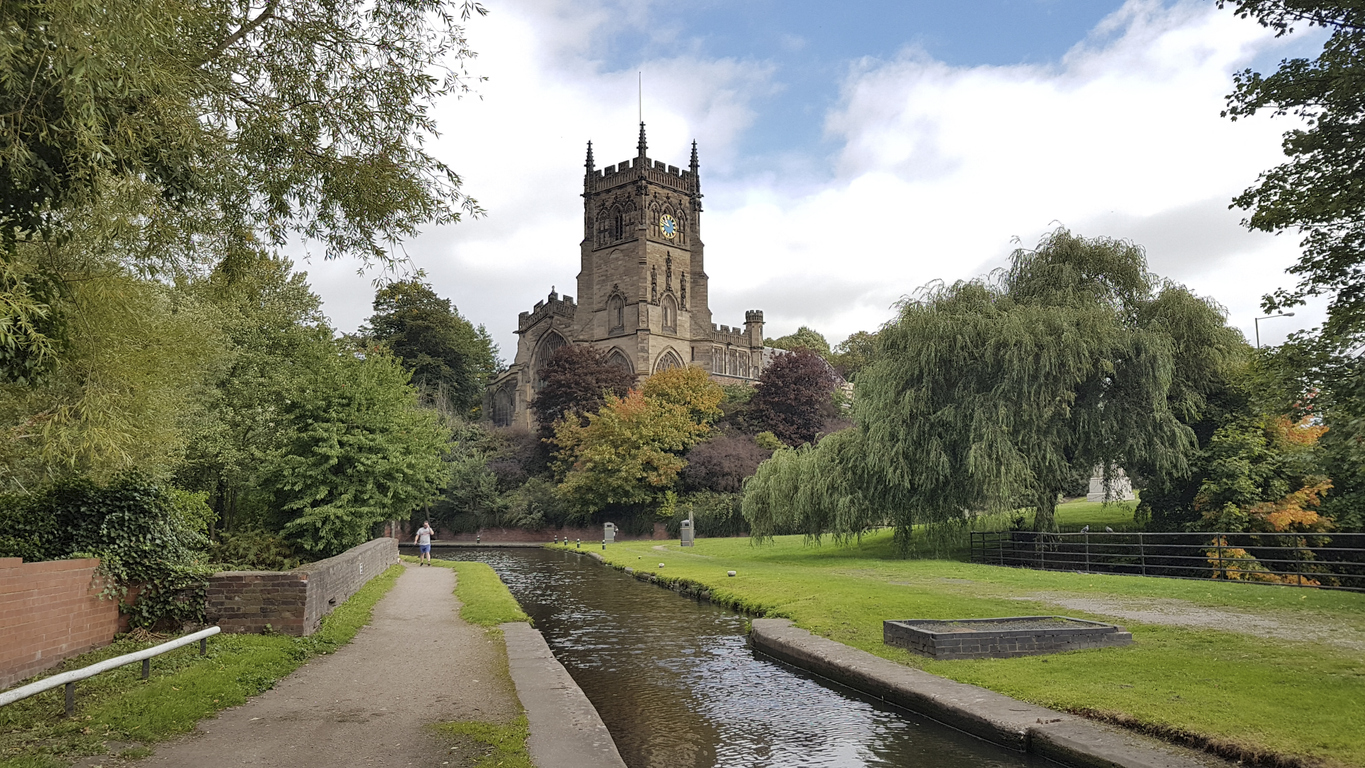Wyre Forest
A History Rooted in Nature
The Wyre Forest is a magical place nestled in the heart of Worcestershire, England. Spanning over 10 square miles, this ancient woodland has stood for centuries, providing a peaceful sanctuary for wildlife and visitors alike. From forest walks and cycle trails to adventure activities and quaint market towns, the Wyre has something for everyone. Evidence shows the Wyre Forest existed as far back as 8000 BC during the Mesolithic period, making it one of Britain's truly ancient woodlands. The forest sits within a glacial ribbon running between Wales and Birmingham, deposited here over 10,000 years ago when glaciers retreated, leaving rich soils. This provided ideal conditions for trees like oak, ash, birch and pine to dominate the landscape over the millennia. Throughout history, the forest has been split into smaller estates and hunting grounds. In medieval times, it was partitioned for timber harvesting to serve water-powered furnaces. Local lords and landowners used sections for small-scale ironworking and hunting reserves. The boundaries of these old estates are still evident today in parish walls and farm boundaries surrounding the central wooded heartland.
Sustainable Harvesting through Coppicing
During the Medieval period, local iron smelting mills and forges needed abundant wood to make charcoal for fuel. Trees within the Wyre Forest estates provided an essential timber supply for these water-powered mills near the River Severn. To ensure the supply remained renewable, coppicing became standard practice. Coppicing involves cutting tree stems low to the ground on rotation, allowing new shoots to continually resprout from the established root structure. By harvesting different coppice sections on planned cycles of 15-25 years, wood could be regularly cropped without felling whole trees. Coppiced poles were used for charcoal while thinner branches made faggots for burning in furnaces. New oak and hazel underwoods established this way encouraged diverse flora and fauna to thrive. You can still identify multi-stemmed coppice stools today from their knobbly trunks and straight poles re-growing. Sections now left uncut allow wildwoods to develop too. Both sustain rich habitats in today's protected Wyre Forest.
A Haven for Wildlife
As one of the few remaining ancient woodlands in England, the Wyre Forest offers precious habitat for specialised forest species. Ancient woodland ecosystems have developed over centuries of natural processes undisturbed by modern farming. Complex structures with old trees, standing deadwood, moist hollows and fungal networks sustain delicate interdependencies. At least 25 ancient woodland indicator plants like Wood Anemone, Bluebell and Wood Sorrel thrive in Wyre’s undisturbed soils. Over 100 bird, mammal, insect and fungal species rely solely on these intricate forest niches making them a conservation priority. Protecting Wyre’s rich biodiversity preserves these rare species for future generations.
Deer, Trees and Squirrels
Three deer species roam the Wyre Forest - fallow, roe and muntjac. Graceful fallow display white rump patches when alarmed, bounding through the woods or grazing forest glades. Strictly herbivorous, they browse on tree shoots, fungi and ground vegetation. Outside bird breeding season, you may spot damage from deer bark stripping trees to strengthen jaws before autumn rutting battles. Shiny trunk scars reveal where stringy bark has been ripped off to access nutritious inner bark. Take care not to disturb passionate stags in a rut that could pose danger.
Roe prefers woodland edges and hedgerows to the deep forest, feeding on shrubs like bramble, ivy and young tree shoots. Muntjac - the smallest UK deer - forage in dense thickets on woodland plants like bluebells. All impact tree regeneration patterns over time, kept in balance by Forestry Commission culling, fencing and tree guards. Another influencer is the grey squirrel, introduced in America in the 1900s. They debark trees to access sap causing damage, unlike the rare native red squirrel now struggling to compete as the Squirrelpox virus spreads. Please report any sightings using the Red Squirrels Northern England app to aid conservation.
Protective mesh guards wrapped around trunks indicate that the area is an active deer management zone aimed at securing tree establishment. Section fencing also protects new growth until tall enough to withstand browsing. See if you spot any stumps cut at an angle with regrowth emerging called couping - another trick to rejuvenate trees nibbled down over years. It's an endless but mostly harmonious battle for balance between trees and grazers in this varied ecosystem.
Specialist Bird Species
Listen for bird songs from resident populations like Willow Warblers breeding in early spring after migrating from African wintering grounds. Hole-nesters including Nuthatches, Treecreepers and Woodpeckers prefer mature trees with cavities offering safe nest sites and insect food sources under loose bark. Light-demanding Hawfinches thrive on seeds in more open canopy areas with regenerating trees. But avoid disturbing closely monitored nests signed for their protection. Specialised birds like Marsh Tits and Lesser Spotted Woodpecker indicate healthy ancient habitat diversity.
Butterflies and Bugs
Butterflies thrive in sunny forest glades dotted among the Ancient Wyre woodland. Watch for the rare Wood White fluttering low over bluebells and bugle flowers from late April, identified by distinctive veined underwings. Another specialist species, the Pearl-bordered Fritillary, glides fast and low over bracken fronds to nectar on the bugle and primrose blooms. Larval webs decorated with pink scales on violets show active breeding colonies. Please take care not to disturb these delicate lifecycles.
Throughout summer, common species like Peacocks, Commas and Small Tortoiseshell feed and breed across various habitats in Wyre Forest. Caterpillars munch on stinging nettles, docks and thistles while adults gather around brambles and wildflowers. Spots of orange or iridescent blue provide delightful pops of colour along any forest walk. The Woodland Trust manages rides and glades specifically for butterflies and invertebrates like the Brown Hairstreak whose caterpillar eats blackthorn. Habitats are tailored around the target species' needs by allowing soft grasses, nectar plants, and scrub to flourish. Veterans oak trees support especially high biodiversity - look for Oak Trunk Code maps revealing which species specialise there. Contact the Forest Rangers to discover more about woodland bugs.
Get Involved with Conservation
From charismatic birds to tiny invertebrates, many rare species rely solely on the Wyre’s precious ancient woodland habitat. Climate change and overpopulation put their specialised niches in peril. Anyone can aid conservation by getting involved with forest management initiatives led by Worcestershire Wildlife Trust or Butterfly Conservation. Volunteer days offer opportunities to clear vegetation, construct reptile hibernacula or survey specialist moths and butterflies. Support projects protecting vulnerable Black Poplars or reviving Pearl-bordered Fritillary colonies through careful coppicing. Adopt your favourite species symbolically to fund their monitoring. Simply sharing wildlife sightings using apps like iNaturalist or FSC’s Nature’s Calendar builds knowledge on trends in biodiversity and ecology. Consider treading lightly by staying on marked paths, noise levels down and dogs under control. Small changes safeguard the forest’s magic.
Reach New Heights with Go Ape
The Wyre Forest invites adventure with its Go Ape high ropes course spanning 5-12 meters off the ground. This treetop obstacle course lets you swing on Tarzan ropes, balance on crossings, and whizz down zip wires over beautiful forest scenery.
Take to the Trees on an Aerial Adventure
The Wyre Forest invites adventure with its Go Ape high ropes course spanning 5-12 meters off the ground. This treetop obstacle course lets you swing on Tarzan ropes, balance on crossings, and whizz down zip wires over beautiful forest scenery. With safety harnesses attached throughout, you can challenge yourself knowing each element is securely rigged to trees and platforms. Go Ape Wyre offers increasing levels of difficulty so all ages can join in the fun. Kids from age 6+ start on low Treetop Adventures with parents, then progress to higher crossings as skills develop. Adults can pick paths matching their confidence and fitness too. Whether you're agile or prefer steadier sections, terminate any part getting too tricky. With 2-3 hours to explore, you set the pace. Between obstacles, admire birdsong and woodland views that city tree climbers miss. For an extra thrill, try forest Segway tours or family Bushcraft sessions learning wilderness skills. Customise your woodland adventure for an unforgettable day gaining new perspectives on the Wyre!
Safety First on the High Wires
Before setting off, all participants get kitted out with climbing harnesses, lifelines, gloves and helmets to meet rigorous safety standards. On-site instructors demonstrate correct use of carabiners for attaching safety lines, and protocols for crossing obstacles using pulleys or wheels. Red and blue colour coding indicates where each clip and karabiner goes per section. Airbags, nets and cushioned ground protect in case of falls. But don't worry - the smart belay system means you won't plunge far! Guides monitor from strategic points offering encouragement or lending a hand if needed. With support one click away, you can test limits in a secure environment. At the trail's end, zip down on high-speed wires for your finale. Compare tales of daring moves, wobbly bridges and views glimpsed between the leaves. After an exhilarating morning in the forest canopy, relax restored and be ready for further adventures!
Treetop Challenges for All Levels
Go Ape Wyre offers tiered routes ranging from easy to extreme so groups can share an experience despite different ages or abilities. Kids Treetop Adventures at lower heights help young climbers develop confidence and coordination on crossings and ziplines. Meanwhile, parents test their skills on adjacent Advanced trails 9m up with trickier see-saws and Tarzan swings. Teens eager for independence can opt for tougher Summit routes at 12m high featuring longer aerial runways and heart-thumping mega zip wires. Peer groups bond while spurring each other onward. Solo adults simply start on course levels matching their agility and nerves! Routes twist through the forest canopy so the ground remains in sight for reassurance. Whatever you choose, be sure to high-five at the finish as you've achieved something special together. No doubt you'll already be planning to return to prove what else you can conquer in the tree canopy!
Enchanted Walking Trails
Lace up your walking boots and step into the enchanting realm of the Wyre Forest. Over 15 waymarked walking trails ranging from 1-13km let you wander these woods for an hour or full-day adventure. Choose family-friendly routes to follow Gruffalo sculptures inspired by the beloved children's tale. Sculpted characters like Fox, Owl and Snake guide you through interactive stations based on the story. Kids can use activity packs to search for camouflaged Forest Mouse along the way. After all the excitement, reward efforts with ice creams or meals at the Gruffalo-themed cafe back at Callow Hill visitor centre. Close by at Broadwas Peter Rabbit trail, a sensory garden based around Beatrix Potter characters like Jeremy Fisher brings more fun. Spot features from the books recreated including Mr McGregor's garden shed and Mrs Tiggywinkle's washing line! Gentle gradients work even for toddlers in back carriers or preschoolers on foot.
Longer Trails for Exploring
For those seeking peaceful rambles, extend adventures into the wider forest along Hope Way or the 10km Forest Wander passing the key habitats route. Crisscrossing streams offer natural pit stops to splash water on hot days. Gaze up at the magnificence of Cathedral-like beech avenues arching overhead. Pause under the gnarled boughs of legendary Shropshire Lad's Oak, once inspiration for poet A.E. Houseman. Longer routes challenge legs but mostly follow gentle gradients, allowing time to soak up the woodland atmosphere. Compacted gravel surfaces provide access for wheelchairs, prams or mobility scooters on selected Gentle Explorers paths like the Lakeside and Enchanted Ways. Seasonal walking events like fungus Forays, Twilight Treks or accessible adapted cycles provide extra interest for venturing through the trees whatever your ability. However far you roam, a profound sense of nature's peace resonates when walking in Wyre Forest.
Guided Walks and Audio Trails
For keen wildlife watchers, join guided walks highlighting the Wyre's rich habitats and seasonal specials like bluebells. Regular Sunday Strolls focus on flora and fauna while photograph Safaris help capture nature's beauty. Book via Wyre Forest Visitor Centre for upcoming dates and themes. Self-guided audio trails enhance lone walks with insights into forest management, industrial history and natural wonders. Download the app and let local voices accompany your wanderings through distinct zones like pools, bogs and oak pastures. Hear anecdotes on coppicing, charcoal burning or spot patterns of ancient woodland indicator plants. Augment adventures via technology's magic.
Exploring the Picturesque Market Towns - Two Towns, One Forest
Beyond the wooded slopes lie charming market towns brimming with history, independent shops, cafes and riverside pubs. Positioned on the River Severn which borders the forest's western edge, Bewdley and Kidderminster make ideal bases to explore the Wyre Forest and Malvern Hills.
Historic Riverside Bewdley
Beyond the wooded slopes lie charming market towns brimming with history, independent shops, cafes and riverside pubs. Nestled on the River Severn just west of the forest, Bewdley makes an ideal base to explore the Wyre and beyond. First recorded in 1472 and later Georgian-fortified, this quaint town still flaunts black-and-white medieval buildings lining steep streets that twist up to St Anne's Church and Tudor House Museum. Hop aboard a Severn Valley steam train at Bewdley station to taste history in motion. The lovingly restored engines transport you back to bygone eras chugging along bluffs rising over the Severn. Return to wander Bewdley's riverside gardens where sands slope gently for summer picnics. Upstream, the beach comb for driftwood treasures deposited along the shore. Downstream, watch standup paddleboarders ride the Severn Bore tidal wave when conditions allow. Bewdley packs history and hospitality along its riverbanks. Discover more about its past at the town’s small Heritage Centre and music museum.
Culture and Canals in Kidderminster
Just east of the leafy Wyre lies the contrasting world of Kidderminster - once the heartland of Britain's thriving carpet-weaving industry. Get a taste of its manufacturing heritage via interactive exhibits at the Museum of Carpet along the Ring Road. Nearby Lea & Perrin's sauce factory makes for a spicy pitstop. Venture into the town centre Three Spires Quarter for galleries, antiques arcades and independent stores showcasing local crafts. Stop for award-winning ales at the Weavers micropub founded right beside former textile mills. Catch live gigs in original venues like Brumagem Screwdrivers pub hosting punk bands in its quirky den. Along Kidderminster's canal towpaths, waterside pubs and cafes create tranquil spots to refuel after walking or cycling. Marvel at the intricate brickwork of redundant forges now converted into apartments. The spirit of innovation still echoes through this reimagined landscape.
Hitting the Trails on Two Wheels
While shaded walking trails tempt many, the Wyre Forest has over 100km of waymarked cycling trails to explore on two wheels. Green-graded easy routes allow families to take scenic spins along gently rolling singletracks. Trail centres at Callow Hill and Pedmore Wood entrance rent kid-sized bikes with stabilisers, trailers, tag-a-longs or e-bikes to suit all ages. Helmets are provided for safety. Choose shorter 5km play trail loops like the Tubular Bells and Whoops-a-Daisy circling the visitor centre site to build young confidence. The aptly named Magic Carpet route rewards ride uphill with a smooth descent gently twisting through oak and pine stands. Pack a picnic to refuel your legs after any adventurous morning.
Longer Trails for Older Kids
For older kids mastering bike skills, the intermediate 12km Table Top Trail loops around Trimpley reservoir past trickier technical features to test balance and control. Small jump sections add excitement but avoid tabletop drops to match skills for now. Trailside scenery makes scenic stops for family chats. Serious teen riders can seek trail thrills at the Cannock Chase centres just north. Freeride routes descend steep contours between dense stands of pine where patience is needed for two-way traffic. Jump tracks challenge trick skills with rocky drops and wooden features to session. Experience the buzz where forest freedom meets adrenaline action!
Safaris and Cycle Adventures
Unusual cycling adventures enhance Wyre Forest's appeal for active families. Why not ride wildlife safari trails through West Midland Park’s alternative entrance from dawn until the animal enclosures open? Witness white rhinos, giraffes and mischievous baboons starting their day as you pass silently by. Guided after-hours Bat, Badger and Fallow deer safaris introduce all ages to forest creatures often hard to spot. Kids get close learning adventures while avoiding disruption to sensitive nocturnal behaviour patterns. Unique memories build new environmental guardians. For multi-day family challenges, the Wyre Forest Ring cycle route makes a perfect micro-adventure covering 37 miles of bridleway loops and descents. Pack camping gear to turn the journey into a mini expedition aiming to finish the circuit! Orientate navigation skills around the forest heartland from one spoke to the next. Celebrate achieving your goal of completing the Ring by enjoying ice creams back where the cycle started!
Kid-Friendly Activities in the Wyre
Families thrive in the Wyre Forest where child-friendly attractions make memorable days out. Beyond Go Ape ropes already mentioned, venture east from Bewdley to discover the Gruffalo Trail with life-sized wooden sculptures depicting scenes from the classic Julia Donaldson book. Storyboards recount this favourite tale of bravery and wit.
Forest Fun at Gruffalo and Peter Rabbit Trails
Families thrive in the Wyre Forest where child-friendly attractions make memorable days out. One highlight is the Gruffalo Trail starting from Callow Hill visitor centre near Bewdley. A story walk features wood sculptures and activity stations depicting scenes from the classic Julia Donaldson book. Kids follow snake, fox and owl characters along paths before entering the Gruffalo's sandy lair with giant claws! Take the spotter guide and make it a game to find Forest Mouse. After all the excitement, the Gruffalo Cafe next door has speciality icecreams shaped like owl cookies. A few miles north at Broadwas, the Peter Rabbit sensory trail creates more fun for young fans of Beatrix Potter books. Features around a pretty garden and orchard recreate Mr McGregor's shed, Mrs Tiggywinkle's washing line and scenic logs where Jemima Puddleduck waddled. With toddler-friendly surfaces, even little explorers can join this adventure before tuckered-out parents relax at the tea garden cafe.
Active Adventure Play
At Dennisville playground in central Wyre near Kidderminster, a huge wooden fortress fuels active imaginations. Linked towers, tunnels, slides and climbing walls let kids expend energy while parents enjoy parkland views from picnic benches with wifi. Next door, a concrete skate park has ramps and rails for all wheeled sports from scootering to parkour tricks. After fun times, sample milkshakes and waffles in the cool 1950s-themed diner. Bigger kids can ramp up adventure via quad biking, archery or military-style paintballing in woodland zones at nearby Stockwood Discovery Centre. Zip wires, obstacle courses and an indoor soft play barn give all-weather options to tire out energetic young explorers ready for a good night's sleep!
Forest Discovery
Budding naturalists can get hands-on with forest habitats via regular events at Wyre Forest visitor centres. Become a Jedi of the Forest, crafting your own woodland crown or wand to take home. Join guided llama walks to search for creatures leaving signs about their woodland secrets. Monitoring moth traps, pond dipping and building hibernacula shelters increase understanding of fragile ecosystems needing protection. Free Forest School sessions inspire young guardians of the future through nature play.
Related articles

Let us know you agree to cookies
We use marketing, analytical and functional cookies as well as similar technologies to give you the best experience. Third parties, including social media platforms, often place tracking cookies on our site to show you personalised adverts outside of our website.
We store your cookie preferences for two years and you can edit your preferences via ‘manage cookies’ or through the cookie policy at the bottom of every page. For more information, please see our cookie policy.
